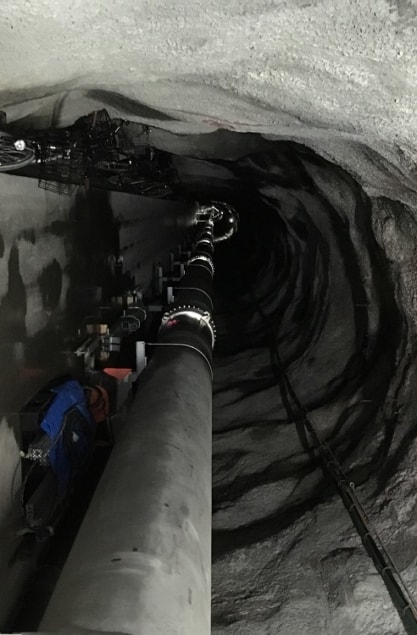
Physicists in China have revealed plans to build a massive new underground facility in the centre of the country to study gravitational waves and test Einstein’s theory of general relativity to an unprecedented precision. The Zhaoshan Long-baseline Atom Interferometer Gravitation Antenna (ZAIGA), is to be located in eastern Wuhan and cost two billion yuan (about £226m). If the project is fully funded, it could be operational by 2025.
The first phase of ZAIGA, which could be complete by the end of 2020, will involve building a 300 m vertical tunnel under the Zhaoshan Mountain – 80 km south-east of Wuhan – to study various predictions resulting from general relativity. It costs 600 million yuan (£68m) and is fully funded by local governments and the Chinese Academy of Sciences. “We have just completed site exploration with tunnel excavation starting this year,” says Mingsheng Zhan, principal investigator of ZAIGA, who is based at the Wuhan Institute of Physics and Mathematics at the Chinese Academy of Sciences.
The tunnel will be mainly used to test the weak equivalence principle, which implies that the trajectory of a free-fall object is independent of its mass and internal structure. Numerous experiments have proved the principle to be correct, including a 12 m-tall “atomic fountain” – in which a cloud of atoms are tossed upwards in the Earth’s gravitational field by lasers – in Zhan’s lab in Wuhan. The atomic fountains at ZAIGA will be mounted on the top and bottom of the tunnel with a high-vacuum chamber running along it. “The idea of an atomic fountain is to let go of two slightly different atoms and compare how they fall,” says Zhan.
Another experiment planned for the tunnel will involve installing optical clocks at both ends to measure the time difference predicted by general relativity: time goes by faster at higher elevation than at a lower elevation due to what is known as gravitational redshift. Zhan says that while atomic clocks aboard Galileo satellites have been a huge success in testing this effect, ground-based optical clocks can be controlled better and are less influenced by outside temperatures.
We hope [the experiments] will bring good surprises
Mingsheng Zhan
ZAIGA will also measure the “space–time dragging effect” caused by Earth’s rotation distorting space–time. This will be done to a higher precision than that carried out by NASA’s Gravity Probe B satellite, which launched in 2004 and ended operations in 2010. “We hope [the experiments] will bring good surprises,” adds Zhan.
China is not, however, alone in such endeavours and some of those tests will also be carried out at a similar facility called the Matter–wave laser Interferometric Gravitation Antenna (MIGA) being built in Rustrel, France, by a consortium of 17 European countries. MIGA features a 300 m-long optical cavity and will carry out precision measurements of gravity as well as applications in geosciences and fundamental physics.
Bouncing atoms
Once the 300 m vertical tunnel is complete, physicists then hope to construct a gravitational-wave observatory, which would be under the mountain at an average depth of 200 m to reduce the effect of seismic noise. Rather than detecting gravitational waves by bouncing laser beams off mirrors as used by the LIGO gravitational-wave observatories in the US, ZAIGA-GW would instead use an atom interferometer. This would involve splitting an atom beam in half, and allowing both halves to travel for a certain distance before being recombined to look for differences in their paths. A slightly longer path would result from a tiny curvature in space–time that could be caused by a passing gravitational wave. Atom interferometers tend to be more sensitive than their laser counterparts as atomic beams travel more slowly, which therefore amplifies any signal from a passing gravitational wave.

China unveils plans for two new gravitational-wave missions
Costing 1.5 billion yuan, of which the team has partial funding, ZAIGA-GW would consist of three 1 km-long tunnels in the shape of an equilateral triangle with each arm being an independent atom interferometer. ZAIGA-GW would then aim to detect gravitational waves in the 0.1–10 Hz frequency range, which would be most likely emitted by medium-size black-hole binaries. These black holes have masses between 100 and one million solar masses and are elusive but crucial to explain whether supermassive black holes formed from the expansion of small black holes, from the merger of multiple smaller black holes, or possibly from other scenarios.
Zhan says ZAIGA-GW will be open to international collaboration and the team currently has exchanges with Europe, the US and Japan, which is building KAGRA – the world’s first underground gravitational-wave observatory to use cryogenic mirrors. Zhan also says that ZAIGA-GW could be later upgraded to 3 km or 10 km arms “if funding is available”.



